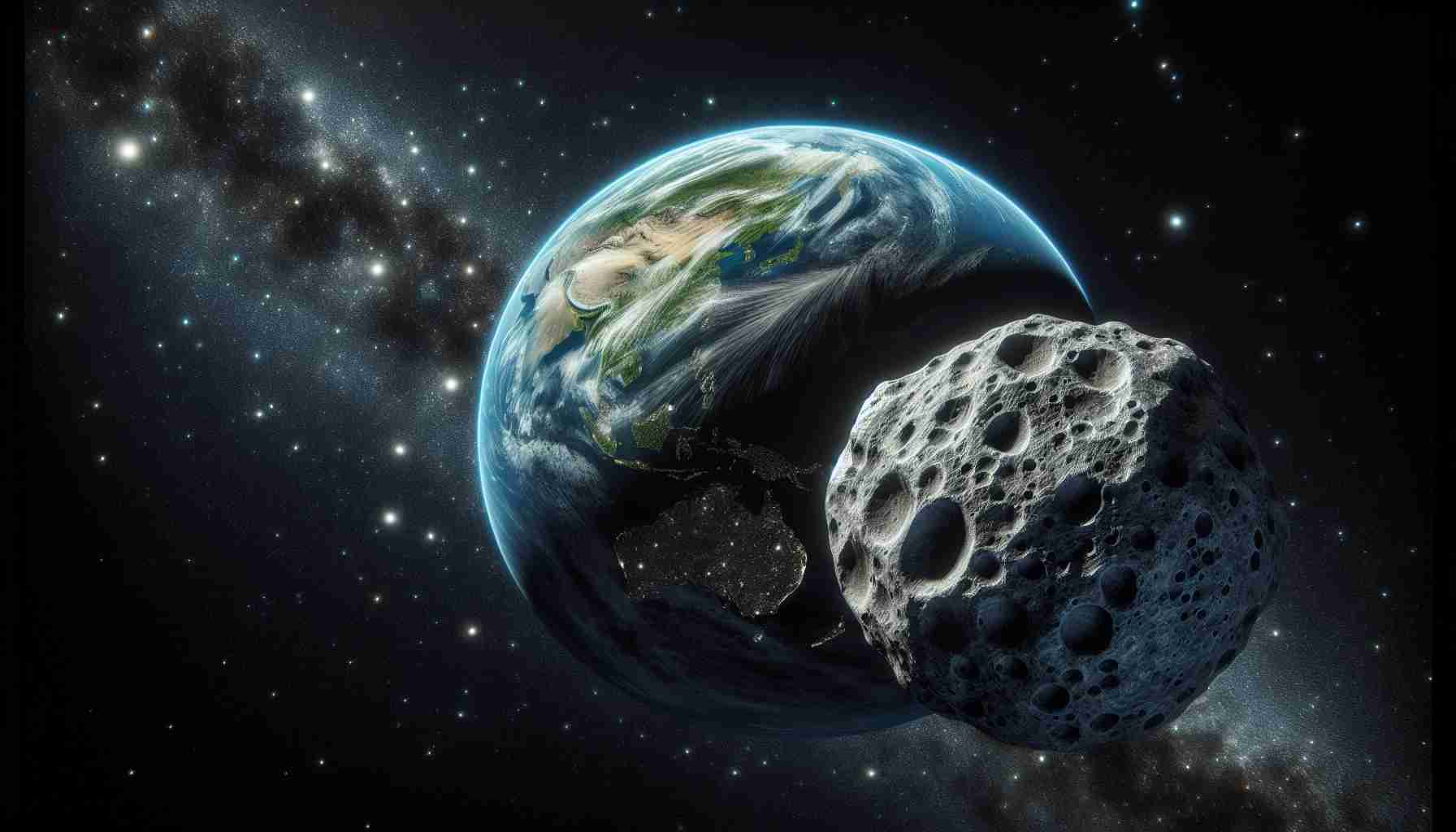- The asteroid 2024 YR4 is compared to Apophis, highlighting its status as a significant potential threat.
- It has a 1% chance of impacting Earth on December 22, 2032, which is considered a serious risk.
- 2024 YR4 is rated a 3 on the Torino Impact Hazard Scale, indicating it is a noteworthy object of concern.
- Technological advancements are being made by agencies like NASA and the ESA to enhance planetary defense mechanisms.
- Ongoing monitoring and data collection may help alleviate fears regarding the asteroid’s trajectory.
- The situation serves as a reminder of the unpredictable nature of space and the necessity for preparedness.
Asteroid 2024 YR4 is creating a cosmic stir among scientists as its potential collision with Earth sparks intrigue and concern. Approximately 130 to 300 feet wide, this celestial body is deemed the most hazardous asteroid spotted since the notorious Apophis in 2004—a rock once feared to be a significant threat on its approach in 2029.
With an alarming 1% chance of impact predicted for December 22, 2032, astronomers are closely monitoring its trajectory. Although this risk is low, it places YR4 at a 3 on the Torino Impact Hazard Scale, marking it as a serious object of interest. The fear that gripping our planet today echoes the fate of the dinosaurs, who fell victim to a catastrophic asteroid impact 66 million years ago.
Fortunately, humanity’s technological prowess is advancing swiftly. Space agencies like NASA and the European Space Agency are not simply waiting for disaster; they’re actively developing strategies to defend Earth against future threats. As Richard Moissl from the ESA emphasizes, protective measures are being put in place to ensure our planet can “defend itself” against potential impacts.
Astronomers are optimistic that as they gather more data on YR4, it could follow a similar trajectory as Apophis, which was initially deemed a significant threat but later cleared of danger. For now, with our eyes on the stars, it’s a reminder of the vast and unpredictable universe and the importance of vigilance in our exploration of it.
Key takeaway: 2024 YR4 poses a low collision risk, but it highlights the importance of continued vigilance and innovation in planetary defense.
Asteroid Alert: What You Need to Know About 2024 YR4!
Understanding Asteroid 2024 YR4: The Newest Cosmic Threat
Asteroid 2024 YR4 has captured the attention of scientists and space enthusiasts alike due to its potential for a rare Earth impact. With a size ranging between approximately 130 to 300 feet, it has been classified as the most hazardous asteroid since Apophis was identified nearly two decades ago. The asteroid’s predicted impact risk is estimated at 1% for December 22, 2032, placing it at a 3 on the Torino Impact Hazard Scale. This level indicates that while YR4 poses a low threat, it nonetheless warrants serious observation and detailed tracking by astronomers.
Key Features of 2024 YR4
1. Size and Dimensions: Roughly 130 to 300 feet in diameter.
2. Impact Probability: Currently calculated at 1% for a potential impact on December 22, 2032.
3. Torino Scale Rating: Rated a 3, indicating a need for monitoring and precautionary measures.
4. Comparisons with Apophis: Initially perceived as dangerous, Apophis was later cleared, showcasing the importance of continual monitoring and reassessment.
How Are Space Agencies Responding?
Humanity’s technological advancements offer a proactive approach toward planetary defense against potential asteroid impacts. Notably, NASA and the European Space Agency (ESA) are engaging in various initiatives:
– Deflection Strategies: Developing technology to potentially alter the course of threatening asteroids.
– Tracking Networks: Enhancing their observational capacities to better predict and monitor asteroids like YR4.
– Public Awareness Campaigns: Educating the public about the risks and responses to possible asteroid encounters.
Critical Questions about Asteroid 2024 YR4
1. What would happen if 2024 YR4 collided with Earth?
If 2024 YR4 were to collide with Earth, its impact could release energy comparable to nuclear weapons, leading to catastrophic localized effects. The size suggests it could create significant damage, depending on the impact location, but given its low probability, this remains a hypothetical scenario.
2. How does the Torino Scale work, and what does a rating of 3 imply?
The Torino Scale is a system used to convey the risk posed by near-Earth objects. A rating of 3 indicates that YR4 is a potentially hazardous object that merits study and monitoring but is not an immediate threat. It helps scientists prioritize their observation resources.
3. Are there other asteroids of similar concern currently being monitored?
Yes, numerous other asteroids are being tracked by various space agencies. Some of them have similar risk levels but differ in their probability of collision. Agencies prioritize monitoring those with higher risk assessments.
Latest Trends and Insights
The ongoing studies of asteroids like 2024 YR4 reflect a greater trend in astronomical monitoring and planetary defense. Increased funding and technological innovation are leading to better tracking systems and defensive strategies. Additionally, the recent successes of missions aimed at visiting asteroids provide vital data for assessing future threats.
Future Predictions
As technologies continue to improve, the ability to detect and analyze dangerous near-Earth objects is expected to advance significantly. Experts believe that with improved data collection and analysis, humanity will better understand the risks and develop effective countermeasures to mitigate potential threats from space.
For more information on planetary defense and asteroid monitoring, visit NASA and ESA.













